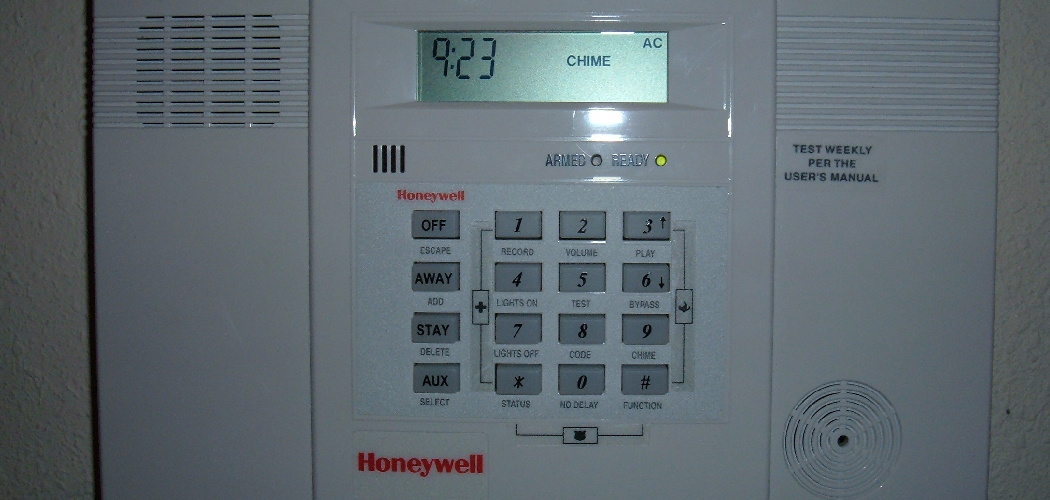Changing the alarm code on your ADT security system is an essential step in maintaining the safety and security of your home or business. Whether you need to update the code for personal reasons or ensure that only authorized individuals have access, the process can be done quickly and efficiently.
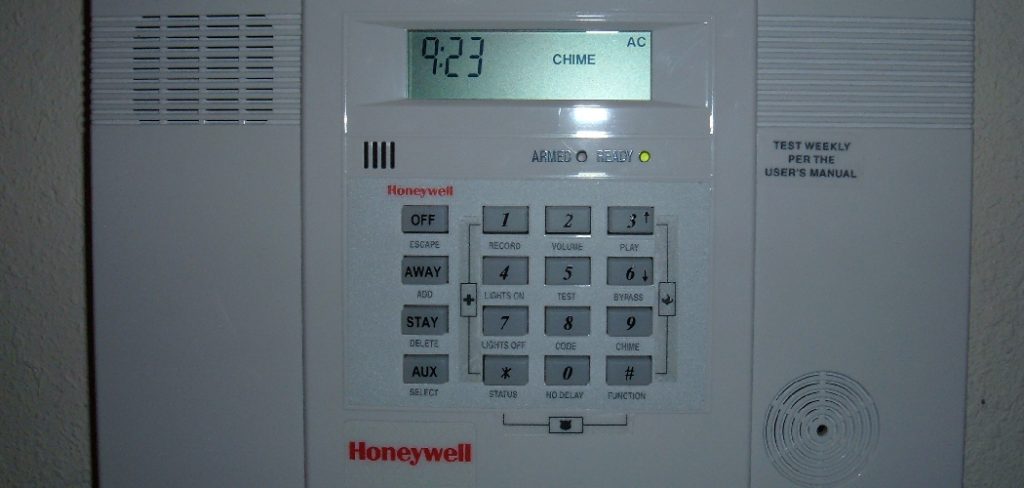
This guide on how to change alarm code adt will walk you through the necessary steps to update your code, ensuring your security system remains effective and user-friendly.
Understand Your ADT Alarm System Type
Before changing your ADT alarm code, it is crucial to identify the type of ADT alarm system installed in your home or business. ADT offers a variety of system models, including keypad-based systems, touchscreen panels, and smart home integration systems. Each system may have slightly different steps for updating the alarm code.
Check your user manual or locate the model information on your control panel to determine your system type. Knowing this information ensures you follow the correct procedure and prevents potential errors during the code-changing process. If you are unsure about your system type, you can contact ADT customer support for assistance.
Pre-Change Checklist
Before updating your ADT alarm code, ensure you complete the following steps to streamline the process and avoid any complications:
Verify Your System Model
Confirm the specific model of your ADT control panel. This information is crucial to ensure you follow the correct code-changing procedure.
Locate the User Manual
Keep the user manual handy to reference any required steps or troubleshooting tips during the process.
Have the Current Code Available
Ensure you know the existing alarm code, as most systems will require the current code to authorize changes.
Check for Authorized Access
Make sure you have the necessary permissions and access to modify the alarm code, especially for shared or multi-resident systems.
Test the System
Verify that the system is functioning correctly before making any changes. Address any existing issues to prevent further complications.
Taking these steps ahead of time will help ensure a smooth and successful code update process.
10 Simple Step-by-step Guidelines on How to Change Alarm Code Adt
Step 1: Identify the Type of Alarm System You Have
Begin by determining the specific model and type of ADT alarm system installed in your home or property. Check the user manual or look for the model number on the control panel or keypad.
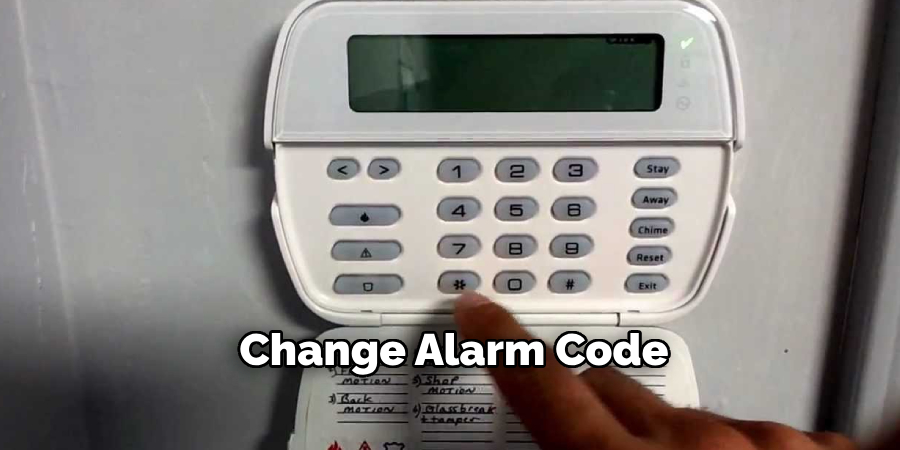
This information is essential, as different models may have varying procedures for changing the alarm code. If you cannot locate the model details, contact ADT support for assistance. Knowing your system type ensures that you follow the correct steps for your specific device.
Step 2: Locate the “Code” Button or Menu Option on Your Control Panel
Once you have identified your alarm system model, locate the “Code” button or menu option on the control panel or keypad. This button or menu is typically used to access the settings related to user codes. On some systems, the button may be labeled as “Change Code,” “User Code,” or similar terminology.
If your system uses a menu-based interface, refer to the user manual to find the precise navigation steps to access the code settings. Ensuring you are in the right section is crucial for successfully changing your alarm code.
Step 3: Enter the Current Code
Once you have navigated to the code settings section, input your current alarm code using the keypad or interface. This step is necessary for verifying your identity and ensuring that only authorized users can make changes to the system.
After entering the current code, follow any on-screen prompts or instructions provided by the system to proceed.
Step 4: Enter Your New Desired Code
After successfully verifying your current code, the system will prompt you to input a new desired code. Carefully enter the new code using the keypad or interface, ensuring it meets any requirements set by the system, such as length or specific character criteria.
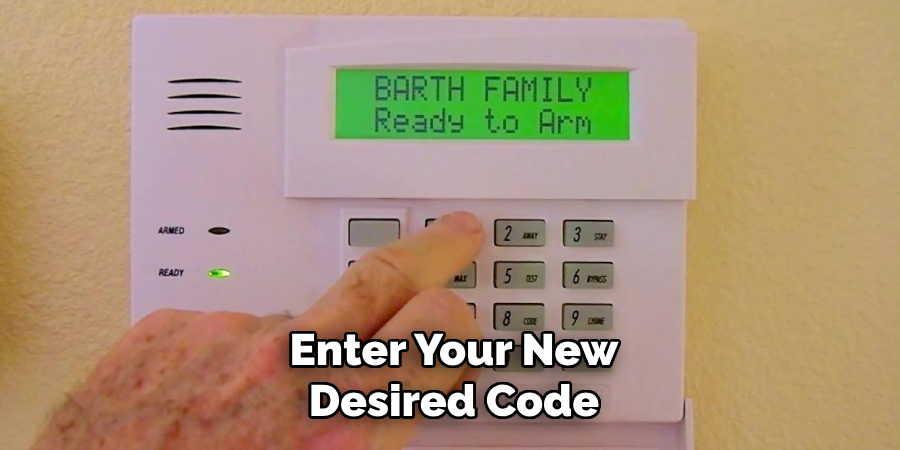
Confirm the new code by re-entering it if prompted, and make sure to choose a code that is secure but easy for you to remember.
Step 5: Press the “#” (Pound) Key to Save the New Code
Once you have entered and confirmed your new code, press the “#” (pound) key on the keypad to save it. This action signals the system to finalize your code update. Wait for a confirmation message or sound indicating that the new code has been successfully saved.
If no confirmation is received, review the process and try again to ensure the code was saved correctly.
Step 6: Test the New Code
To ensure that your new code is working properly, test it immediately after saving. Enter the new code on the keypad and confirm that it unlocks or performs its intended function. If the code does not work, double-check that it was entered correctly during the setup process.
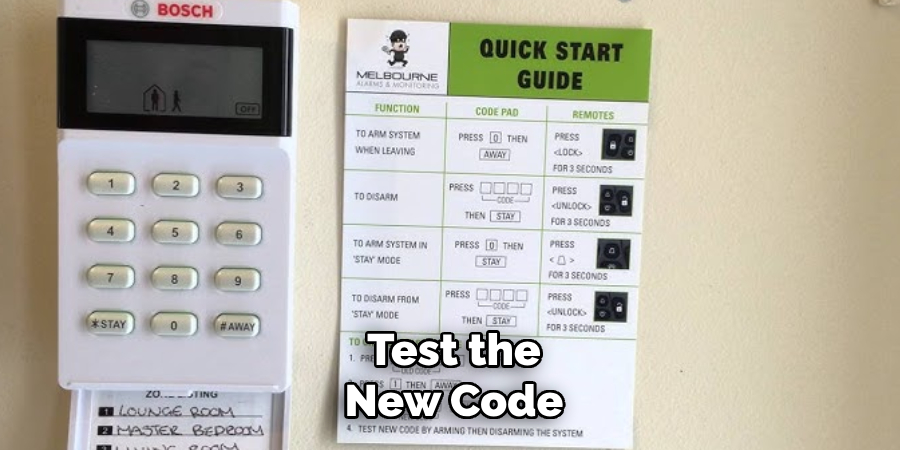
If issues persist, you may need to repeat the steps to set up a new code or consult the device’s user manual for troubleshooting tips. Testing the code ensures that your system is secure and functioning as expected.
Step 7: Store the New Code in a Secure Location
Once you have verified that the new code works correctly, it is essential to store it in a secure location. Avoid writing the code in easily accessible or obvious places, such as sticky notes on your desk or in plain sight. Instead, consider using a password manager or a locked, encrypted file to store the code digitally.
For physical storage, a safe or locked drawer can be a reliable option. Keeping the code secure reduces the risk of unauthorized access and ensures the integrity of your system.
Step 8: Keep Your Alarm System Up to Date
Regularly updating your alarm system is crucial to maintaining its effectiveness and security. Manufacturers often release updates to fix bugs, enhance performance, or address newly discovered vulnerabilities. Ensure your alarm system’s firmware and software are always running the latest version.
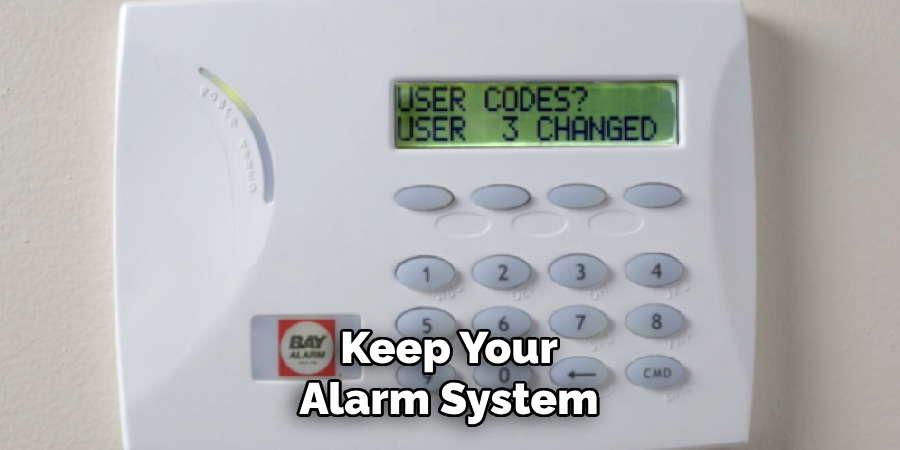
Check for updates regularly or enable automatic updates if the feature is available. Additionally, monitor hardware components for wear and tear or technological obsolescence, and consider upgrading when necessary. Staying proactive with updates ensures your alarm system remains reliable and protects against evolving security threats.
Step 9: Additional Security Measures
To enhance the overall effectiveness of your alarm system, consider implementing additional security measures to create layered protection. Install security cameras at key entry points and around the perimeter to provide visibility and deter potential intruders. Use motion-sensor lighting in areas with limited visibility to illuminate unexpected movement and discourage unauthorized access.
Ensure all doors and windows are equipped with sturdy locks, and reinforce them with security bars or shatter-resistant glass if needed. For added safety, establish a clear security protocol, such as designing an emergency response plan or teaching household members how to use the alarm system properly. By integrating these measures, you strengthen your property’s defenses and ensure a safer living environment.
Step 10: Seek Professional Assistance if Needed
If implementing security measures feels overwhelming or if you require specialized expertise, don’t hesitate to seek professional assistance. Security consultants can evaluate your property’s vulnerabilities and recommend tailored solutions to address specific risks.
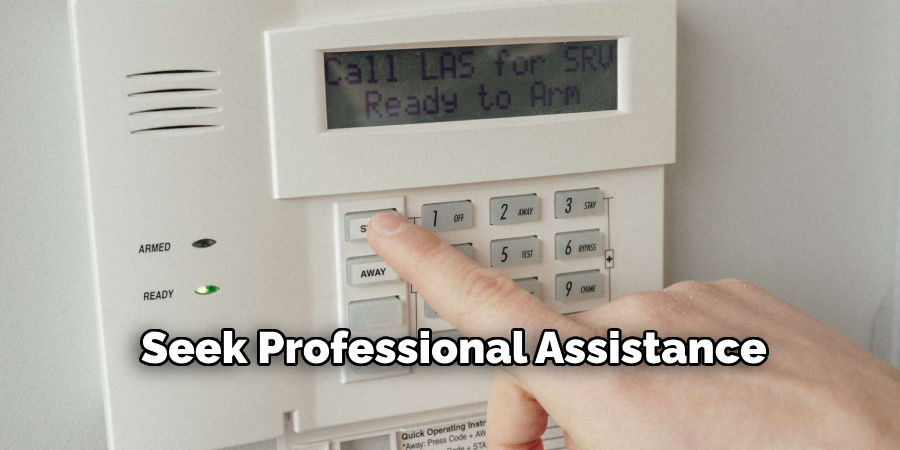
Additionally, professional installation services for alarm systems, surveillance cameras, and other high-tech equipment ensure they are set up correctly and functioning optimally. Investing in expert guidance provides peace of mind and ensures your home’s protection is as robust as possible.
Following these steps on how to change alarm code adt, you can confidently and safely access your security system. Remember to regularly update your alarm code as an additional security measure. Furthermore, consider implementing other security measures such as motion sensors, smart locks, and video doorbells for added protection.
Frequently Asked Questions
Q: How Often Should I Change My Alarm Code?
A: It is recommended to change your alarm code every 3-6 months as a security measure. The more often you change it, the less likely someone is to guess or figure out your code.
Q: Can I Use the Same Code for Different Security Systems?
A: It is not recommended to use the same code for different security systems, as it can make it easier for hackers or intruders to access multiple systems if they figure out one code.
Q: What Should I Do If I Forget My Alarm Code?
A: If you forget your alarm code, contact your security system provider immediately. They will be able to assist you in resetting or retrieving your code. It is important not to share your alarm code with anyone else for security purposes.
Q: Can I Change My Alarm Code?
A: Yes, it is recommended to regularly change your alarm code for added security. Most security systems have an option to change the code through the control panel or mobile app. Make sure to choose a strong and unique code that is not easy to guess.
Conclusion
Maintaining the security of your alarm system is crucial for the safety of your home or business. Regularly updating your alarm code and keeping it confidential are essential steps in ensuring that your system remains effective.
If you encounter any issues or have questions about using your security system, do not hesitate to reach out to your provider for guidance. By following these best practices, you can enjoy peace of mind knowing that your property is well-protected. Thanks for reading this article on how to change alarm code adt.

